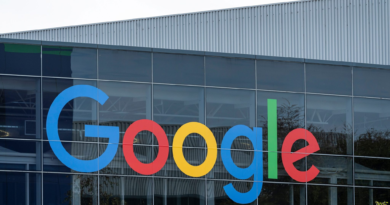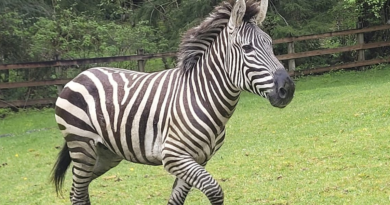Plant-based meat startups are adding real animal fat to the mix: ‘It didn’t sizzle right, it didn’t smell right, it didn’t have that incredibly fatty taste and mouth feel’
Biologist Max Jamilly was in a pub with a friend when he hit upon the idea for his next business. Jamilly and his friend Ed Steele, both meat-eaters who were trying to cut down on their carbon footprint, had ordered a plant-based meat patty off the menu. They soon regretted it.
“It didn’t sizzle right, it didn’t smell right, it didn’t have that incredibly fatty taste and mouth feel,” Jamilly told Fortune. At that point, he realized what plant-based foods have been missing, and what he would spend his future years developing: Fat.
Now, as founders of the three-year-old Hoxton Farms, Jamilly and Steele are at the forefront of a nascent trend in the alt-meat world: Putting animal fats (often cultivated in a lab) into plant-based items.
London-based Hoxton Farms cultivates different types of pork fat. They’re competing with Mission Barns, in San Francisco, which is developing vat-grown pork fat to incorporate into plant-based bacon, meatballs, and sausages. And then there’s Los Angeles-based Choppy (formerly Paul’s Table), which mixes 10% animal fat, collagen or broth into mostly plant-based carne asada and chopped steak, which it sells in a handful of supermarkets on the West Coast. Others, including Lypid and Cubiq Foods, are working on convincing vegan versions of animal fat.
Hoxton Farms
The turn toward meat (of a sort) comes after a dismal couple years for alternative proteins. Once flying high on venture capital funding and lofty promises to save the climate and Americans’ health, plant-based protein companies crashed during the pandemic and most haven’t recovered.
Beyond Meat, whose “bleeding” veggie burger propelled it to the the highest-popping IPO in 2019, has slid from a market cap of $3.8 billion to just $450 million today. Beyond Meat is in ‘survival mode,’ an analyst told trade publication AgFunderNews recently. Impossible Foods, which reported 50% revenue growth last year, has nonetheless backed off IPO plans, citing market conditions. Both companies laid off staff last year. And funding for plant-based meats has collapsed to the lowest amount in nearly a decade, according to venture-capital tracker Pitchbook, which last year asked, “Have we hit peak plant-based meat?”
It turns out that, after the “wow” factor wore off, meat-eaters weren’t convinced enough by the imitation stuff to keep eating it—in particular, as plant-based beef runs about 30% to 40% pricier than the real thing, according to Pitchbook senior emerging technology analyst Alex Frederick.
“Asking people to spend more money for worse-tasting products that aren’t healthier than the real thing is not a great way to drive repeat purchase,” Brice Klein, a co-founder of Choppy, told Fortune. “None of these products or companies are really solving a consumer problem, where climate change is an earth problem. But it’s not a consumer problem; you cannot eat values.”
Defenders of plant-based meats note that they’ve only been on the scene for a short time. In a statement, an Impossible spokesperson said: “The plant-based category is just getting started. This is a $7.5 billion global industry compared to the $1.4 trillion animal meat industry. Meat analog products like ours have only been in-market for less than a decade and at mass in just the last few years.”
The spokesperson added, “We’re the only plant-based meat company in the US seeing consistent growth and we’re outpacing all our competitors in both dollar sales and unit sales.” Beyond Meat did not respond to Fortune’s request for comment.
Today, vegetarians or vegans make up just 5% of Americans, roughly the same portion as two decades ago. And those carnivores who are interested in cutting back on their meat intake—including the three founders who Fortune spoke with for this story—are more likely to substitute beef with chicken, or vegetables, than a faux-beef patty.
“Many people would rather reduce the number of times they eat burgers rather than having a meat alternative that doesn’t taste quite as good and where they’re not sure what is in it,” Rosemary Green, a sustainability professor at the London School of Health and Tropical Medicine, told Fortune.
Choppy
Where’s the beef?
Enter the next phase of the alt-meat revolution: Actual fat, or, in some cases, meat byproducts like broth or collagen.
Fat, as any professional chef knows, is a powerful conduit of flavor—it’s why many recipes have the cook sauté garlic or spices in oil before adding other ingredients. “Fat gives food that creamy, silky, rich texture that we crave,” chef and culinary instructor Becky Selengut wrote in an essay recently. We crave it because hominids evolved to gravitate to calorie-dense fats and proteins during a time when food was hard to come by; indeed, some research suggests our taste for fad led to the evolution of humans’ unusually big brains.
Animal fat, which is solid at room temperature, is especially hard to replicate using plant-based oils, says Hoxton Farms’ Jamilly. (Even coconut oil, the most solid of the plant fats, melts at around 76 degrees Fahrenheit, a far much lower melting point than animal fat.)
“Fat affects the way [food] looks and it has by far the biggest effect on how meat cooks,” he says. “When you heat up a steak, some of the fat softens and then some of it renders, it turns to liquid,” he explains. As the steak cooks in its own fat, the heat and oxygen combine to create the Maillard reaction, which browns the meat. “And the reason the flavor of a steak really lingers is because the fat coats your taste buds,” he says.
Animal fat contains different flavor profiles, what Jamilly calls a “signature,” which contribute to the distinctive flavor of each meat. “That’s why pork tastes different from beef and from chicken. None of them taste like coconut,” he says.
That’s why, according to Jamilly, alt-meat companies “are desperate for innovative ingredients that will make their products better.”
Some flavor, slightly less processing
Cell-cultivation companies still have a long way to go before their products hit shelves, including scaling up and, in the UK, gaining regulatory approval. (U.S. regulators cleared lab-grown meat to eat last year; the UK’s government has yet to weigh in.) They’re betting on the idea that lab-grown meat will still be viewed more positively than lab-processed vegetable proteins. Consumers who have become increasingly health-conscious and were likely turned off by the revelation that Impossible and Beyond are highly processed and not great for health.
“Rightly or wrongly, people think of meat as one ingredient,” says Jamilly. “People like the idea of a clean label, and if they can replace five or six nasty ingredients with cultivated fat, people love it.”
In a sense, plant meat suffered from the worst of both worlds—more “processed” than most typical vegetarian fare and more expensive than animal meat. Once the novelty of almost-the-real-thing veggie burgers wore off, it made sense that consumers would return to their typical ways.
“With meat, you are comparing against a commodity product,” says Frederick. And then there’s the cost: plant-based meats are about 30% to 40% more expensive than the equivalent beef product, he says—”that’s a very challenging sell in this inflationary environment.”
In a sense, putting a little bit of fat or broth in a vat of (mostly) plants is just a high-tech version of millennia-long cooking techniques when resources are scant: Adding some beef bones to a stew for flavor, or stretching ground meat with grains or breadcrumbs for meatballs. It’s undeniable that humans will need to eat less meat in the future if we are to prevent climate change. But that diet may look more flexitarian and less strict vegetarian.
“People care most about flavor, and then price and health,” Choppy co-founder Saba Fazeli tells Fortune. Mostly-plant products like his, he says, are the future, rather than absolutes. “It tastes like what you’d expect, and it’s better for you and the planet.”



